I have just finished my article
“The Source of Life–5” and almost immediately had to write the continuation. Everything happens so quickly that I have
no time to prepare the article and to process the photographs, as new events in our park and magnolia garden urge me to write!
Last week brought several surprises; some of them were quite predictable and we expected them, other phenomena indeed did
surprise us.
The fig trees, which were nursery transplants, brought the first unexpected surprise. We had planted several varieties, obtained
from the nursery, in the spring of 2006, when our garden was laid out. They all, except for one, looked more like small bushes,
than small trees. They all started growing quickly under the influence of the psi-field generator from the very beginning, but this
year they “really went for it!” Their reaction surpassed all our expectations, despite the fact that my wife Svetlana and I had already
become accustomed to these “marvels”.
Svetlana is not only an excellent photographer (she took all the pictures) but also an irreplaceable coordinator on the spot. I
introduced all changes and corrections in the functioning of the psi-field generator at a distance, first from San Francisco and
later from Moscow. Due to a number of reasons, both subjective and objective, most of which did not depend on me, I still had
not been able to visit our estate in France.
Therefore, Svetlana had to take care of both our domain and all the problems which could possibly arise, alone. She did not
only study gardening and plant cultivation very thoroughly, but also designed the park and the Japanese garden. She succeeded
in creating such a splendid natural landscape that it surprised even the masters of this occupation — the Japanese!
That is how Svetlana became the source of information about everything that takes place in our park and garden in regard to
the action of the generator of life. Thus, she became my invaluable helper-observer. It was Svetlana who told me about all the
extraordinary changes and all the problems which occurred whilst she was creating our park and magnolia garden. She was
always the first person who saw what was going on and who observed the changes almost every day!
But even she, who would seem have to become accustomed to everything, and not only to events happening on our estate
due to the action of the psi-field generator, was greatly surprised when young fig trees grew higher than the fence, which is
165 cm high, in one week!
In the photo we can see a young fig tree which was transformed from a small bush into a tree in a week! It is true that the
tree appeared to be very strange — it almost does not have a trunk, the branches grow out of the ground (Fig. 71: 1— A week
ago this fig tree was the highest . 2: A week ago this sapling was a small bush of 80 cm high)!
But this is not very important — the trunk will grow! The most surprising thing here is that there are so many fruits on
these young trees that their branches bend! And the fruits are just “putting” on weight; they are doing this so quickly that the
stems of figs, which are not growing and strengthening quite as fast, begin to break under the weight of the ripening fruits
which clearly can be seen on the photo taken on June 20, 2008 (Fig. 72). The figs ripen and grow every day with such speed
that it is even visible to the naked eye. Look at the size of fruits in the photos taken on June 20 and 21, 2008 (Fig. 73). If we
compare the photos of one and the same branch, which were taken on consecutive days, we will clearly see how quickly the
fruits grow, how young branches sag under their weight more and more, and how the stems break a little (Fig. 74).
|
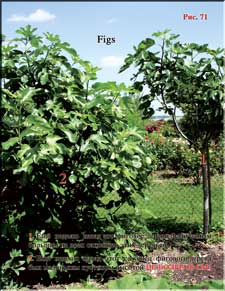
Fig.71 |
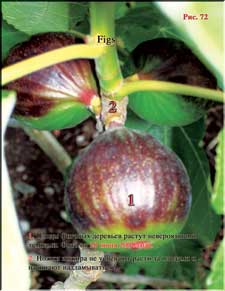
Fig.72 |
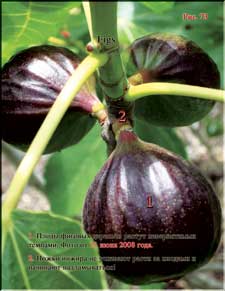
Fig.73 |

Fig.74 |
Sometimes quite amusing situations happen because of the action of the generator of life. For example, some very slow-growing trees
were planted in the Japanese garden of our park, namely, Lebanese cedars (Cedrus Libany), Deodars (Cedrus Deodara)
and Deodar Aureys (Cedrus Deodara Aurea) which are usually trimmed to their owners preferred shape and kept that way
(Fig. 75, Fig. 76 and Fig. 77). Ordinary trees get the “Bonsai” treatment by special stretching, the cutting of some branches and giving a
certain form to the crown.
Usually, after a special clipping of the crown, the gardener’s secateurs do not touch the tree for half a year! These particular varieties
grow very slowly everywhere… except for our domain! In the conditions caused by the psi-field generator our gardeners have to cut
the crowns every week, because of the enormous “stubble” which grows on our Bonsai-trees in just seven days! Moreover, after the
next “hair-cut” new shoots grow more in a week than they would ordinarily do in a year! Look at the next picture, I can assure you that
these really are the same trees just one week later (Fig. 78)!
|
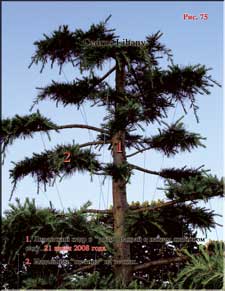
Fig.75 |
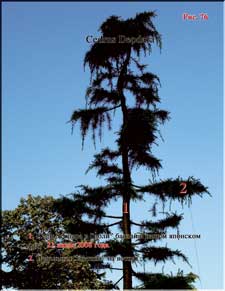
Fig.76 |
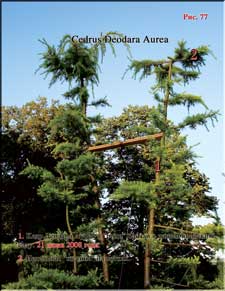
Fig.77 |
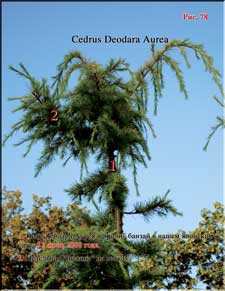
Fig.78 |
In my article “The Source of Life–1” (2005) I described the
changes which happened then in the nursery transplants of Paulownia tomentosa–Imperialis influenced by the dark matter
generator (Fig. 79). In 2008 it continued to react to the generator’s action. This year the Paulownias flowered at the beginning of
May (Fig. 80) and immediately surprised us with the size of the flowers, which are not only wonderful but also much larger than
that of 2005 (Fig. 81). The leaves of this tree keep pace with the flowers. In 2005 they were 22-35 cm long (Fig. 82),
and then they were already twice as big as the “normal” ones.
|
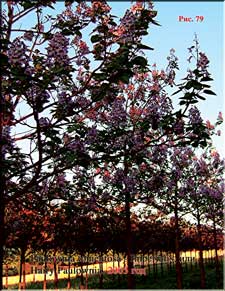
Fig.79 |
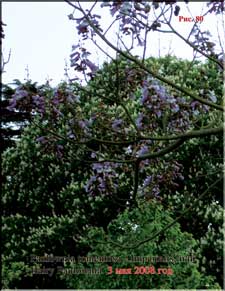
Fig.80 |

Fig.81 |
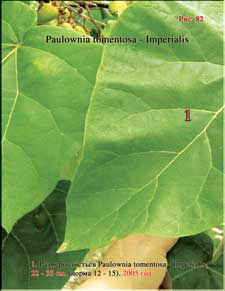
Fig.82 |
But although having such enormous size, the leaves were very thin. In 2008 still young leaves, which have not yet finished their growth and
which appeared on the trees just a week ago, attained enormous size (Fig. 83): Svetlana’s hand can be hardly seen behind a young leaf. That is
not all! The leaves of Paulownia tomentosa–Imperialis became not only very large, but also very thick and acquired a “beeswax” coating
(Fig. 84).
I would like to draw attention to the fact that Paulownia tomentosa–Imperialis blossoms ap-pear first, and for some period of time just
flowers cover these trees. Only when the flowering season is over do buds develop on the branches and the first leaves appear. Thus, by
the time the tree has its first young leaves; fruits are already growing on its branches. It happened like this in 2005 in 2006, in 2007 and also
in 2008!
Despite the fact that in 2005 the size of leaves and fruits of our Paulownia tomentosa–Imperialis was unbelievable compared with
Paulownias that grow outside our domain, in 2008 both the leaves and the fruits are bigger than they were in 2005. Just look at the pictures
and compare the size of leaves and fruits of Paulownia tomentosa–Imperialis in 2005 with those of 2008!
In both photos, 2005 (Fig. 85) and 2008 (Fig. 86), we see the leaves and fruits of this plant. The fruits shown on the picture of 2005 are
more mature, because their little “caps” are already brown which indicates that the ripening has begun, while on the photo of 2008 the same
“caps” are still green which means that the ripening is at its very initial stage!
|

Fig.83 |
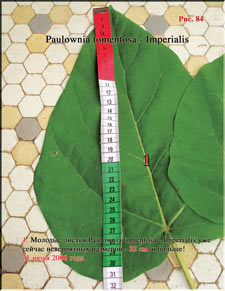
Fig.84 |
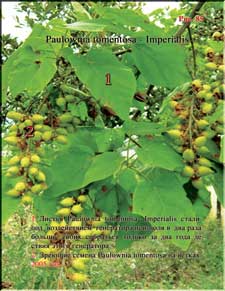
Fig.85 |
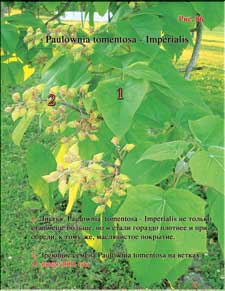
Fig.86 |
I draw so much attention to it, because, if we compare the size of leaves and fruits in the photo of 2005 and in the photo of 2008,
it may seem that fruits of 2005 are much bigger than those of 2008! But this not so! Everything is to the contrary! The truth is that the
fruits and leaves of Paulownia tomentosa–Imperialis of 2008 are bigger than those of 2005. They are just very young, but, nevertheless,
the leaves are already enormous, and the fruits, though already very big, have not yet reached their maximal size. That is why we have
an illusion that the fruits of 2008 are small.
Someone may object and declare this explanation just a lot of talk. Well, I may say, especially for sceptics, that this is not just talk,
but objective facts. In order to be sure of this, it is enough to look at the next photos. The mature fruits of the Paulownias which grow
in our park and those beyond it are shown on the photo taken in 2005. The size of our mature fruits was then 4.5-6 cm, which
was three times bigger than that of the fruits beyond the area of action of the generator of life (Fig. 87). However, our Paulownia’s fruits
in 2008, still quite “green”, have already reached 5 cm (Fig. 88)! Today young fruits almost attained the maximal size of 2005
fruits, and we can only surmise how big they will be when being completely ripe!
The cones of the monkey puzzle tree have also ripened in the last week (Fig. 89)! Araucaria araucana has both female and
male trees. It is necessary that a male tree should pollinate a female tree to give mature cones. It is of interest that an Araucaria araucana
male tree not only produces male cones but also its needle-shaped leaves differ from those of a female tree in colour and form
(Fig. 90)!
|
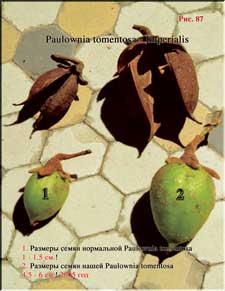
Fig.87 |
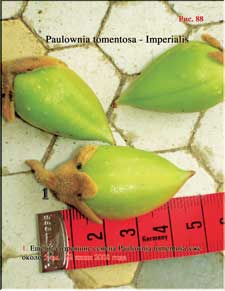
Fig.88 |
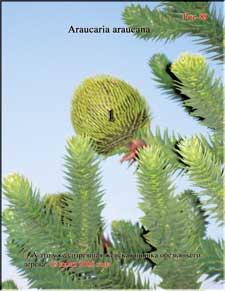
Fig.89 |
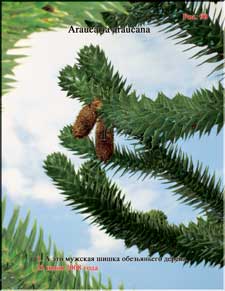
Fig.90 |
Catalpa bignoides unexpectedly surprised us again. It began to blossom as early as the end of the first week of June and…
continued to flower till now (Fig. 91). As we can see, the photo of the flowering Catalpa was taken on June 23, 2008. We could
understand the inflorescences having a lot of still closed buds at the beginning of June, but the fact that two weeks later there are
a great number of flowering inflorescences with buds among the Catalpa’s raging green leaves is very surprising (Fig. 92)! And
this is happening despite the fact that the flowers which began to blossom were blown off by blasts of wind during several summer
rainstorms with thunder and lightning.
Each thunderstorm left an amazing carpet of flowers, divinely scented, under the Catalpas. Every single flower from each
Catalpa’s inflorescence is of amazing beauty and internal harmony, besides being extraordinarily large for this plant (Fig. 93 and
Fig. 94)!
|
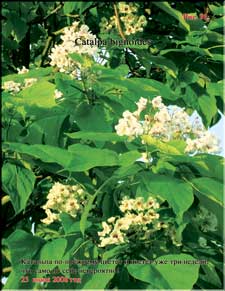
Fig.91 |
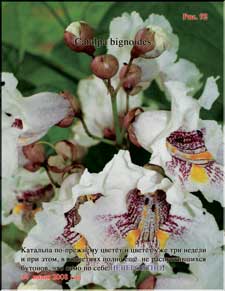
Fig.92 |

Fig.93 |
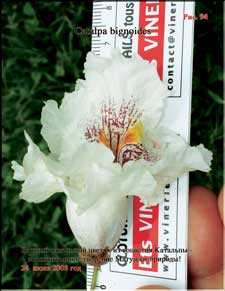
Fig.94 |
Certainly, it is extraordinarily large compared to Catalpas which grow beyond our domain. In the picture we can clearly
see that a single flower from a Catalpa inflorescence is 7 cm long! It turned out that the action of the psi-field generator
converted our estate into a magic world of nature without any genetic engineering, which, in any case, would be unable to make
this kind of transformation; it is simply beyond its power!
But not only Catalpa behaves “extravagantly” and “oddly” due to the action of the psi-field generator! Only a week passed,
as other conifers, not just the trimmed Bonsai-trees, produced strong new shoots! Enormous shoots appeared on the branches of
the Deodars, on quite young branches of only four weeks old. Just in a week (Fig. 95)!
The first impression, when you look at this picture is that this is a weeping willow which has extended its branches “fingertips”
to the water… but the water is bright emerald grass where the wind plays with green waves, and a Deodar plays the role of weeping
willow!
The artichoke catches up with other plants! One month passed since we “became acquainted” with this aristocrat of the vegetable
garden and the inflorescences of Cynara scolymus attained an unbelievable size (Fig. 96)! Svetlana’s hand looks like the hand
of a little child by comparison. This is not yet the end. We will see the final result later, when the inflorescence ripens completely.
Moreover, this will be the result for this year, and we do not know what will happen next year.
Russules timidly peek out of green grass (Fig. 97)! But no matter how much they hide, the snails will find them in order to treat
themselves to their sweet pulp. Because of this we can see that the pulp of these mushrooms is very clean, there is not a single
worm-track! Completely forgetting the title of “king of the autumn forest”, white mushrooms (Boletus edulis) show their caps
here and there! Most likely, the white mushroom “decided” to get the title of “king of the summer forest” too (Fig. 98)!
|
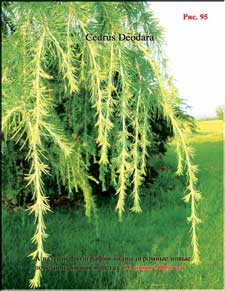
Fig.95 |

Fig.96 |
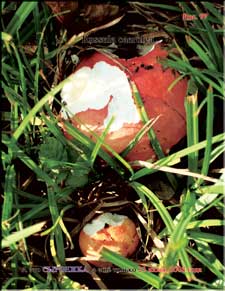
Fig.97 |
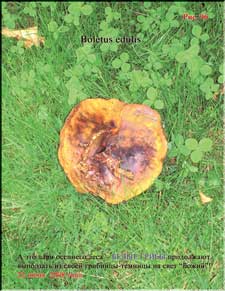
Fig.98 |
Everything that is going on in our domain looks like a magical fairy-tale, but all magic is in the true knowledge of nature, and our
Fairy-tale is not over, but only just begun!
|
|
|